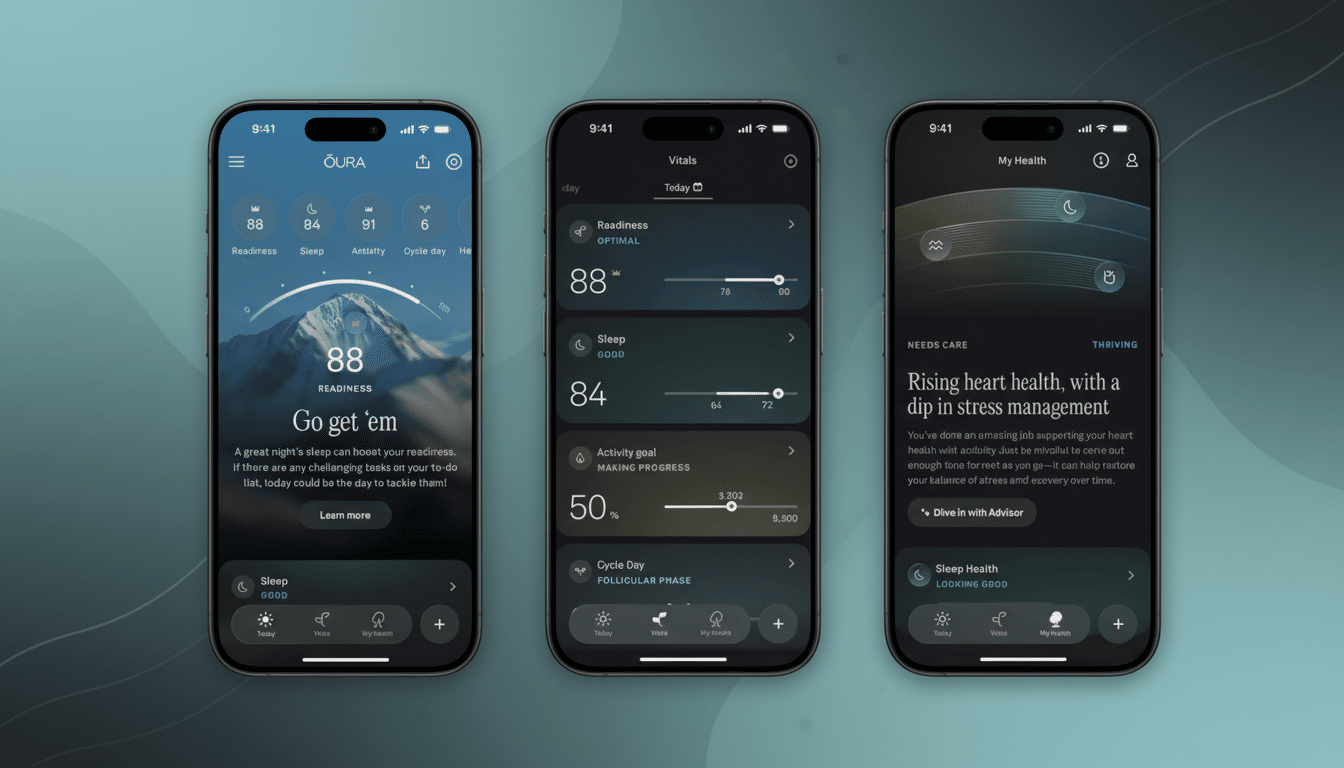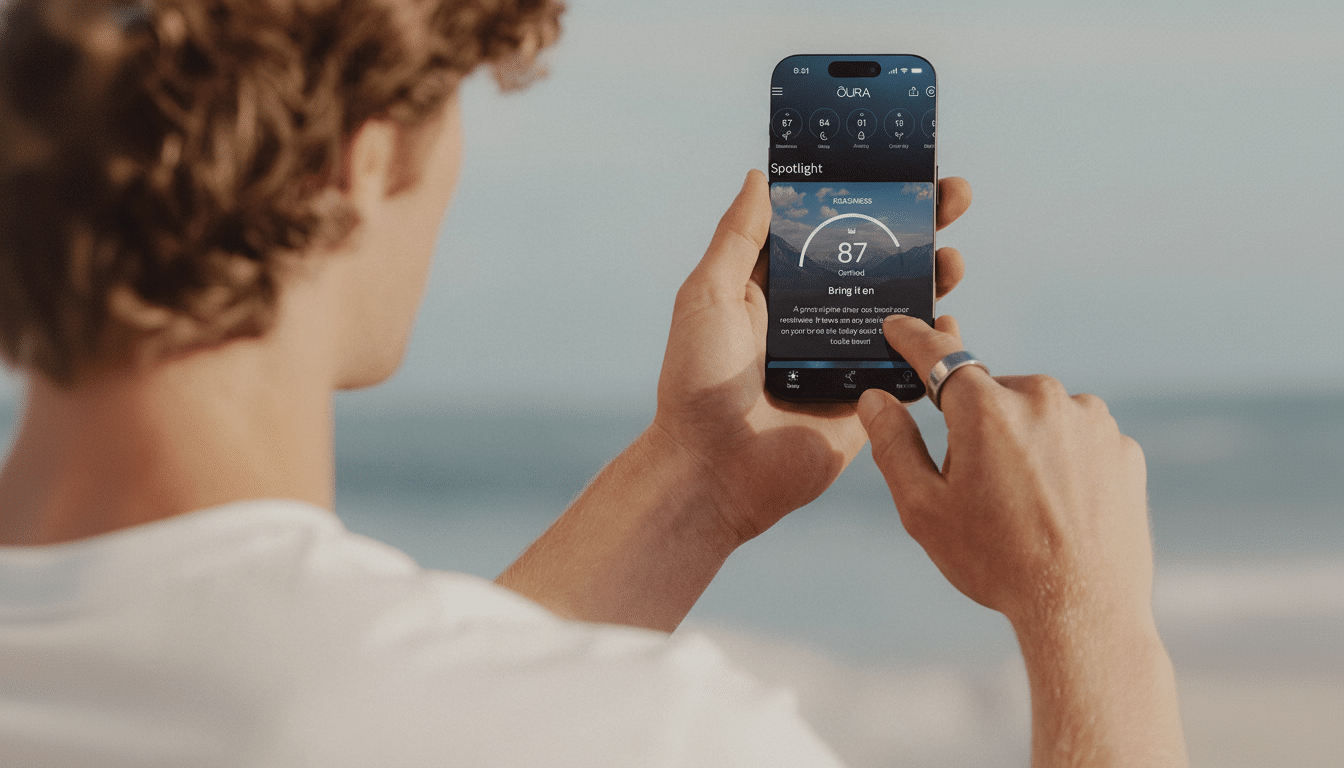Oura is releasing a new app that reveals long-term health trends more naturally, integrating new factors such as stress and the menstrual cycle for the first time. The revision maintains the same three main Today, Vitals, and My Health tabs, but updates the appearance and user interface to show data more interconnected and actionable.
Specifically, the fresh user interface eschews cubical geometries in favor of integrated diagrams and indicators, all of which are integrated with faint graphical representations of nature intended to minimize the cognitive burden.

Longitudinal context is an essential feature of all the My Health components. The new default overview at the top of the tab focuses on the vital signs of health resilience, heart and sleep health, and the features that underpin them. Oura’s new design reflects these key points to keep you focused on patterns, both good and bad. For example, resilience is a core feature to understand, since high slopes and peaks are as crucial to adjust as low troughs. New stress indicators and resilience capabilities continue to be developed.
New cumulative stress metrics clarify recovery needs
Since Oura launched daytime stress and resilience views, it has been one of the company’s development goals to capture the impact of recovery lagging behind need through the tool called Cumulative Stress.
This indicator is based on five primary stress measures:
- sleep continuity
- heart stress response
- sleep micromotions
- physiological temperature adaptation
- amount of daily activity
Scores use sleep stability, cardiovascular, and behavioral elements to distinguish between a tough afternoon and an exhausting month.
Cumulative Stress is introduced alongside Daytime Stress and Resilience on a dedicated Stress Management page, demonstrating more clearly how daily spikes accumulate and whether recovery behaviors are effective. This aligns with existing digital health research showing that multi-sensor, trend-based measurements, rather than one-time spot checks, are essential for understanding stress physiology better. It is the right time for a focus on stress. Since 2020, the American Psychological Association has observed persistently high levels of stress, and clinical research links sustained stress to cardiovascular strain, poor sleep, and declining cognitive function.
By defining stress as an acute and cumulative factor, users are presented with clearer intervention goals:
- consistent bedtimes
- lighter training days
- increased rest during periods
- dedicated relaxation when recovery wanes
Cycle Insights adds a 12-month view and earlier predictions
A popular feature for several rings is Cycle Insights, an expanded space.
The app now offers a 12-month view of forecast periods and fertile windows, simplifying pre-planning and pre-patterning.

Crucially, personalized cyclical phase information no longer requires two months of accumulated data: the app predicts such phases even after a single night’s sleep and later specifies them as more data is collected.
Wearable ambient temperature patterns and nightly heart variations were shown in scholarly studies to reflect menstrual periods and post-ovulatory drifts, and Oura’s sensors are likely to be supportive for that analysis. The corporation has shown that it is interested in reproductive health use cases on previous occasions, such as its progression in femtech, and the new timeline reaffirms that commitment.
Blood Pressure Profile study explores hypertension risk
Separate from the redesign, Oura has received Institutional Review Board approval to run a Blood Pressure Profile study inside Oura Labs, its opt-in program for experimental features. The study generates one of three assessments based on a combination of ring data and a questionnaire on family history, medications, and lifestyle, related to hypertension risk signals:
- no signs
- moderate signs
- major signs
The company told me the findings would be used to refine a future feature intended for FDA submission. It’s an early exploration, not a cuffless blood pressure reading. The American Heart Association still points to upper-arm cuffs as the clinical standard, and any wearable approach would need to undergo rigorous validation. But with nearly half of U.S. adults meeting criteria for hypertension according to federal health data, trend-focused blood pressure insights would be a valuable addition if regulators ever sign off.
How and when the update arrives for Oura users
Oura tells me that the redesign and new metrics will roll out globally in the coming weeks. There’s no firm date, so the new look may just turn up after a routine update.
Users itching to try experimental features can opt into Oura Labs in the app, while the rest of us barracking for the core experience will see our existing data and scores carried forward into the refreshed layout.
To obtain the best results, consider the following steps after updating:
- Ensure the app and ring firmware are both up to date.
- Recheck notification and privacy settings post-update.
- Revisit your Tags and Notes to add context to periods of high stress or cycle changes.
As the app turns its focus from individual readings to pattern-driven advice, consistent wear and accurate annotations will make the new insights truly valuable.

